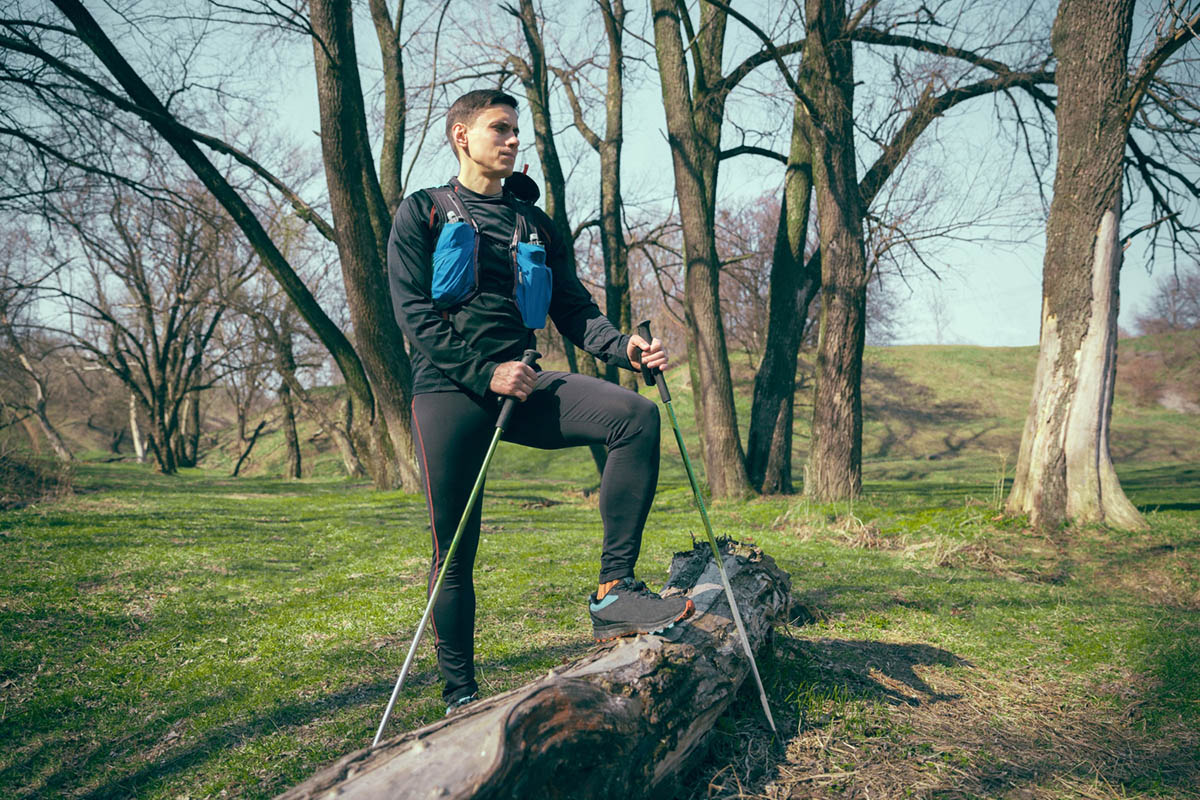When you close your eyes and imagine the perfect workout for your core, what do you see? It might be a series of planks and crunches that are being done on the floor of a gymnasium while using training mats. That photograph has to be altered in some way. Imagine, instead, a stroll in a forest that is packed with gorgeous sights and refreshing air. One of the best and most fun ways to strengthen your core muscles naturally and improve your balance is to go on that beautiful hike you love so much. While climbing is excellent for working out your hips and quads and other lower body muscles, it is really better for your core muscles. Because every step that you take on a trail is a challenge to your whole body, it is considered to be a great core workout through hiking.
Discover more about hiking workouts here.
1. Every Part of Your Core: Beyond the Abs
Your “core” is the starting point for any discussion on this topic. Getting a six-pack isn’t the only goal. A web of interconnected muscles that encircles your whole trunk is known as your core. Yes, it does involve your abs, but it also includes your side muscles, lower back, glutes, and hips. Put your trust in this powerful corset. It supports your weight, keeps your spine safe, and ensures proper posture.
If your system is weak and pushes other muscles to work harder, you may slouch, have back pain, and be more likely to get hurt. But hiking for better posture is a great way and improve your balance by making your core stronger.
Learn more tips for better posture.
2. How Hiking Works Your Core
-
The Unforeseen Topography
A path is not like a level, predictable sidewalk; it is brimming with surprises. Roots, rocks, and inclines are continual obstacles that you must overcome. Your abs contract quickly to protect you from falling with each unsteady stride. You may significantly improve your balance and stability when trail walking for fitness by engaging your stabilizer muscles with this continual micro-adjustment.
-
Dealing with Inclines and Declines
It takes all your strength to climb a hill. As you propel yourself forward with your legs, your core muscles tighten to keep you from slouching and to channel your energy up your body. Perhaps even more taxing on your core is the descent. To keep from falling too far, you must fight gravity by braking with every stride. If you want to keep your upper body steady and your spine safe from sharp blows, you’re gonna need to rely on those powerful abs and lower back muscles.
-
Just Walking
Your core muscles are engaged just by walking, even on flatter areas. To maintain a level pelvis and synchronize the inverse arm and leg swing, you must activate your transverse abdominals and obliques. Your core will have to work considerably harder to handle the additional weight of a small backpack with water and food.
-
Proper Posture
All this focus on the core leads to improved posture. Those pesky muscles that you work out on the path are the ones that keep you from slouching at your desk or during that long wait at the coffee shop.
3. The Advantages of Standing Taller
Benefits to both the abs and the back from trekking go hand in hand. Pulling your torso slightly forward requires strong abdominal muscles, and pulling it back requires strong back muscles. A neutral, upright spine is the result of a balance between these pressures. Back and front muscles are equally strengthened by hiking. Climbing trains your abdominals and hip flexors, while stabilizing and controlled descent improves your glutes and spinal erectors. Balanced strength is essential for posture improvement through hiking and overall outdoor fitness.
You could notice that you sit up straighter and stand taller after going on a few regular treks. As a result of repositioning your shoulders and chest, you may find that your slouching-related lower back discomfort subsides. Walking is more than simply a kind of exercise; it’s a method of retraining your body’s alignment.
Check out posture-friendly workouts.
4. The Final Thoughts on Building a Stronger Centre
You can develop a strong core that will serve you well in any activity without spending a fortune on a gym subscription or expensive equipment. Just outside your door lies the solution to your strength and posture problems. Hiking is an excellent approach to getting in shape since it’s entertaining, practical, and all-encompassing. It demonstrates that physical activity need not be a dreaded duty but can instead be an exciting journey that feeds the soul, revitalizes the intellect, and lays the groundwork for inner strength.
So, get your hiking boots on, locate a path in your area, and start your journey toward a vigorous core workout through hiking. Do that, and your body and posture will be grateful.
Find more outdoor fitness ideas.
